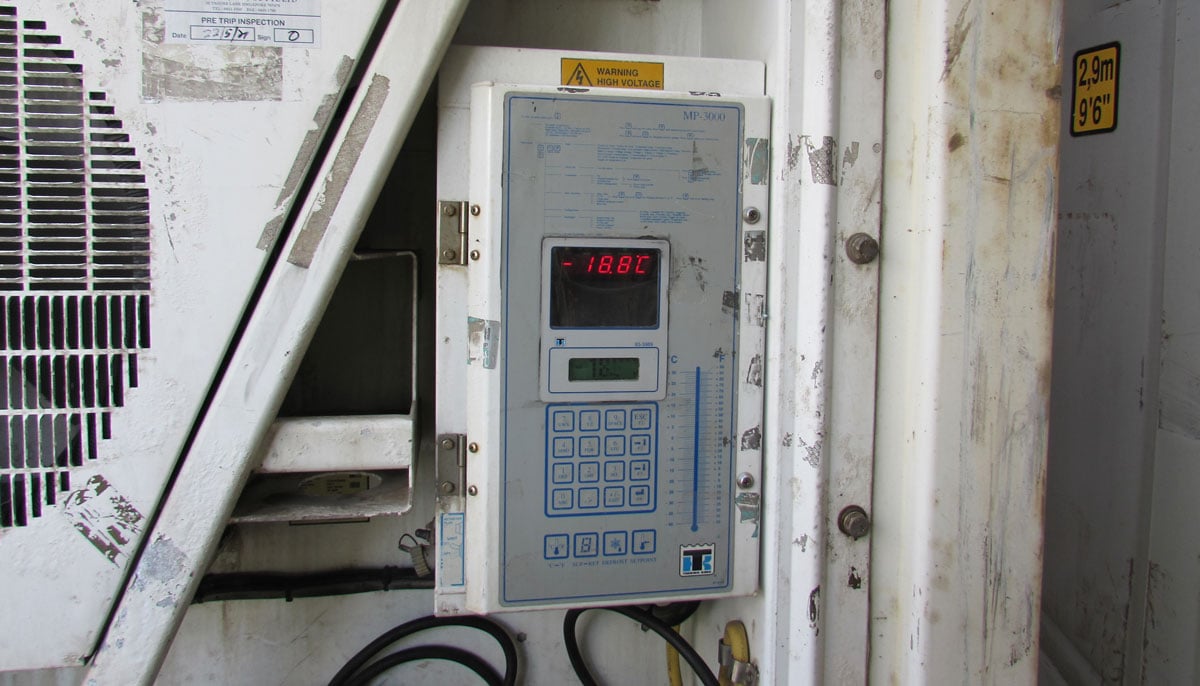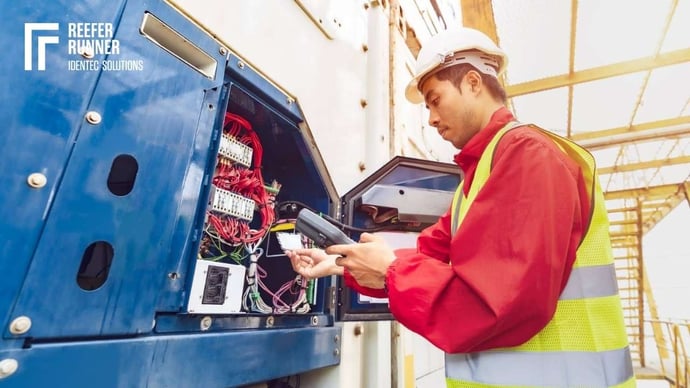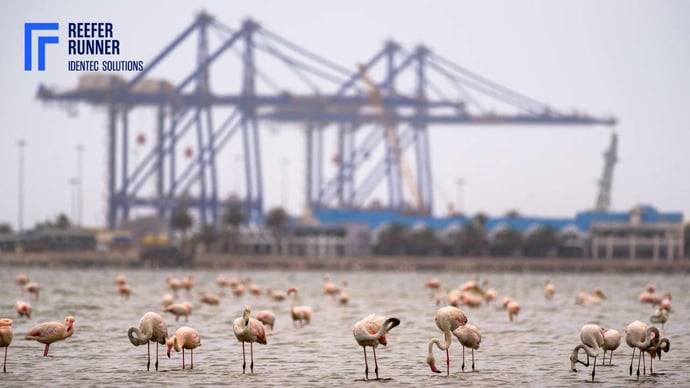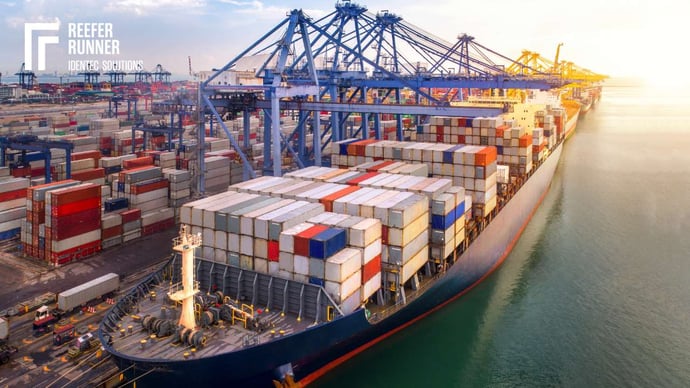Just do it: Monitor your reefer energy consumption
| Written by Stephan Piworus
Container terminals play a crucial role in global trade, serving as essential hubs for the movement of goods. However, these bustling hubs also consume substantial amounts of energy, making energy efficiency a paramount concern. Within container terminals, refrigerated containers, commonly known as reefers, contribute significantly to energy consumption.
This article explores the energy needs of container terminals, delves into the energy consumption of reefers, and highlights effective strategies for reducing their energy usage through peak shaving, shading, and other tactics.

No video selected
Select a video type in the sidebar.
As energy costs increase and the decarbonisation campaigns grow, terminals are more and more aware of their energy consumption. Ports understand that energy becomes increasingly a cost factor. More importantly, terminals as a crucial infrastructure of the global supply chain share also responsibilities to support the energy transition.
The most effective way to support both aspects of the current energy discussion is to avoid energy consumption at all. Wasting resources is one of the main contributors to the current climate crisis and should be addressed as equal as new technologies and policies. Many ports started projects to decarbonise their whole operations recently. One current example of such transitioning is GTI Mumbai, operated by APMT. Partnering with Siemens, a pilot project evaluates the potential of energy and carbon reductions and implements technology and processes to lower emissions as planned.
Learn how automated refrigerated reefer monitoring results in fewer claims

Energy Needs of a Container Terminal
Container terminals are complex infrastructures that require substantial energy to operate efficiently. The energy requirements encompass a range of activities, including cargo handling, transportation, container stacking, equipment maintenance, lighting, and administrative functions. The International Association of Ports and Harbors (IAPH) estimates that energy consumption in ports is responsible for approximately 18-30% of total operational costs (IAPH, 2020). These energy demands have both economic and environmental implications, calling for a sustainable cold chain and approaches to reduce energy consumption.
One source to reduce the carbon footprint is refrigerated containers which are per definition energy-consuming entities. Goods are stored up to minus 25 degrees Celsius and have to be kept at this temperature level. Multiplying this energy effort with hundreds and thousands of reefers in one port alone is a giant energy bill. It is easy to understand how even small energy optimisation can help to reduce emissions. Reefer monitoring must include monitoring energy consumption as well to learn about processes, maintenance and in-time repairs of reefers. Energy efficiency of reefer operations is only possible when consumption is monitored and managed in an intelligent way.
Reefers are an essential component of container terminals, ensuring the preservation and transportation of temperature-sensitive cargo. However, their operation entails significant energy usage. The International Association of Ports and Harbors (IAPH) reports that reefers can account for up to 25% of the total energy consumption in container terminals (IAPH, 2020). This high energy consumption is primarily attributed to the continuous need for cooling or heating to maintain optimal cargo conditions during storage and transit.
Further reading: Learn more how real-time reefer information impacts safety and productivity in container terminals
Reducing Energy Usage of Reefers
To enhance energy efficiency and reduce the environmental footprint of reefers in container terminals, various strategies can be employed. The following tactics have proven to be effective in optimizing energy usage:
Peak Shaving: Peak shaving involves managing the energy demand by reducing power usage during periods of high electricity grid load. By implementing smart energy management systems, container terminals can intelligently schedule the operation of reefers, staggering their energy consumption and avoiding simultaneous power peaks. This approach can contribute significantly to reducing energy costs and enhancing overall energy efficiency (Liang et al., 2021).
Shading: Shading refers to the use of physical structures or natural elements to shield reefers from direct sunlight. This simple yet effective technique helps reduce the need for cooling, as direct exposure to sunlight can lead to increased temperatures inside the containers. Installing shading structures, such as canopies or awnings, can minimize solar heat gain and decrease energy requirements for reefers (Wei et al., 2018).
Efficient Temperature Management: Implementing advanced temperature management systems can optimize the energy consumption of reefers. Monitoring and controlling temperature levels precisely based on cargo requirements can avoid unnecessary cooling or heating, reducing energy usage. Additionally, adopting intelligent sensor technology can ensure real-time monitoring of container conditions, enabling prompt adjustments and minimizing energy waste (Huang et al., 2019).
Improved Insulation and Equipment: Enhancing the insulation properties of reefers and utilizing energy-efficient equipment can significantly reduce energy consumption. Upgrading insulation materials and ensuring proper seals can minimize heat transfer and improve overall energy efficiency. Additionally, employing energy-efficient compressors and condensers in reefers can lead to substantial energy savings (Wang et al., 2020).
Energy Consumption Monitoring: Implementing a comprehensive energy consumption monitoring system can provide valuable insights into reefers' energy usage patterns. By continuously monitoring and analyzing energy consumption data, container terminals can identify areas of inefficiency and implement targeted measures for improvement. Real-time monitoring allows for proactive energy management, enabling prompt adjustments and early detection of potential issues. Moreover, energy consumption data can serve as a basis for setting performance benchmarks, tracking progress, and evaluating the effectiveness of energy-saving initiatives (Al-Ghamdi et al., 2020). Ultimately, energy consumption monitoring empowers container terminals to make data-driven decisions and optimize energy efficiency in reefers more effectively.
Takeaway
Addressing energy efficiency concerns in container terminals, particularly in the context of reefers, is crucial for sustainable operations and reducing the environmental impact. By implementing strategies such as peak shaving, shading, and efficient temperature management, container terminals can optimize energy consumption and reduce costs while minimizing their carbon footprint. These tactics, supported by scientific research and industry expertise, pave the way for a greener and more efficient future for container terminal operations.
IDENTEC SOLUTIONS is on a quest to reduce wastefulness in the global supply chain. Reefer Runner is our way how to do it - monitoring every individual reefer in a terminal for temperature, humidity, and energy. It raises alarm if the set-up (e.g. temperature) is exceeded or energy is not supplied. Reefer Runner delivers energy data from every reefer wireless and enables deep analysis of energy consumption. In this way, Reefer Runner, a remote reefer monitoring solution, contributes to the project goals such as at GTI Mumbai to minimise energy wastefulness (further reading: Reefer productivity).
Interested to learn everything about the Cold Chain and Reefer Management? Discover the basics of Cold Chain logistics and download our free eBook "Inside The Box: Cold Chain and Reefer Management".
We published our eBook also as an online-version: Cold Chain and Reefer Management
References
- Huang, B., Qiu, Y., & Chen, X. (2019). Real-time energy management system for temperature-controlled containers. Energy, 186, 115845.
- International Association of Ports and Harbors (IAPH). (2020). Environmental Ship Index and Port Emission Tool. Retrieved from https://www.iaphworldports.org/environmental-ship-index-esi/
- Liang, Z., Su, X., & Zhang, D. (2021). Optimizing container terminal energy consumption and environmental pollution control using a peak shaving model. Journal of Cleaner Production, 278, 123649.
- Wang, Z., Gao, H., & He, Q. (2020). Analysis of energy consumption and emission reduction potential of container refrigeration units based on a new comprehensive evaluation method. Energy, 199, 117464.
- Wei, T., Deng, X., Song, Y., & Yang, Q. (2018). Energy saving and carbon reduction of container terminal shading by green roofs: A case study in Hong Kong. Sustainable Cities and Society, 41, 452-460.
- Al-Ghamdi, S. G., Saleh, M. A., & Eldrandaly, K. (2020). Energy consumption and greenhouse gas emission monitoring and management in seaports. Journal of Cleaner Production, 258, 120819.
Note: The article was updated on 16th May, 2023
Related Articles
Related Product





